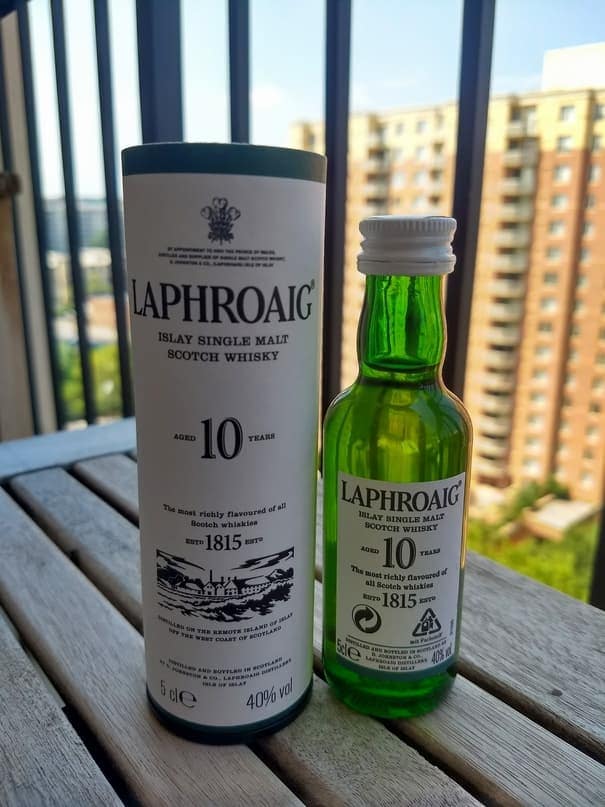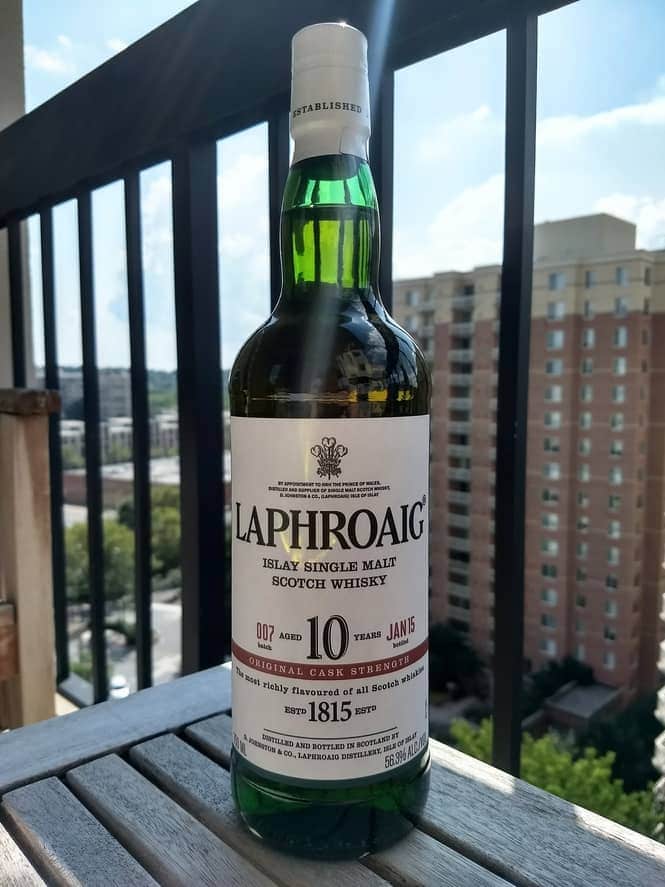
Laphroaig 10 vs
Laphroaig 10 Cask Strength
I love cask strength whiskeys. They are uncut and uninhibited whiskeys straight from the barrel in their purest form. The smells, tastes, and alcohol are in full force, but there is always the risk that the alcohol becomes too powerful for its own good, detracting from the whiskey as a whole. When distillers release cask strength versions of their normal products, it’s interesting to see how they compare. Are they better? Worse? Is it worth the extra money? Let’s find out in this ongoing series called Cask Strength Comparison.
In today’s edition of Cask Strength Comparison, we compare Laphroaig’s standard 10-year scotch with its small batch cask strength brother. These two are very similar, made from 100% malted barley, peated, and aged for at least 10 years in ex-bourbon barrels. The main differences are alcohol content and large batch vs. small batch (although I don’t know how small is small batch). I’ll admit that I already love Laphroaig 10 cask strength and gave it a “Top Shelf” rating and highly recommend it to anyone who likes peated Scotch.
I’ve also been lucky enough to visit Islay and the Laphroaig distillery. It’s a beautiful place to visit, and I highly recommend that any whiskey lover go Scotland to see how Scotch is made.
How do they Compare?

How to Read the Chart
Regular Laphroaig 10 is in blue, and cask strength is in orange. The center of the circle indicates none of a trait. Further out the line indicates a stronger presence of that trait.
The scale (from inside to out):
– None
– Light
– Light-Moderate
– Moderate
– Moderate-Strong
– Strong

Laphroaig 10 cask strength is a drastic improvement over regular Laphroaig 10. It’s bigger, better, and more complex. The peat is the main difference. The cask strength version’s peat is obviously more intense, but it’s also more salty, woody, and vegetal, creating sensations of mushrooms, seaweed, and the ocean.
Mixed with the stronger wood and spice notes, the cask strength’s smell and taste are more savory and meaty, like barbequed meat covered in sauce. There are a lot of different characteristics that blend together nicely into an excellent Scotch. The regular version has many of the same components, but they don’t come together as well. If you compare them side to side, the regular version lacks a certain richness that makes it feel incomplete.
The biggest difference is the regular Laphroaig 10’s rubber and gasoline smell / taste. Even though it’s not very potent, it is still noticeable enough to detract from the overall experience and makes it less pleasant to drink. I can’t tell if it’s from the peat or the alcohol. Regardless, it’s a major flaw that the cask strength version doesn’t have.



